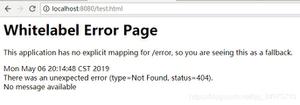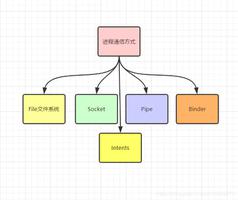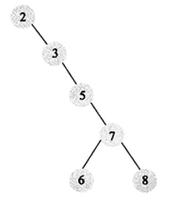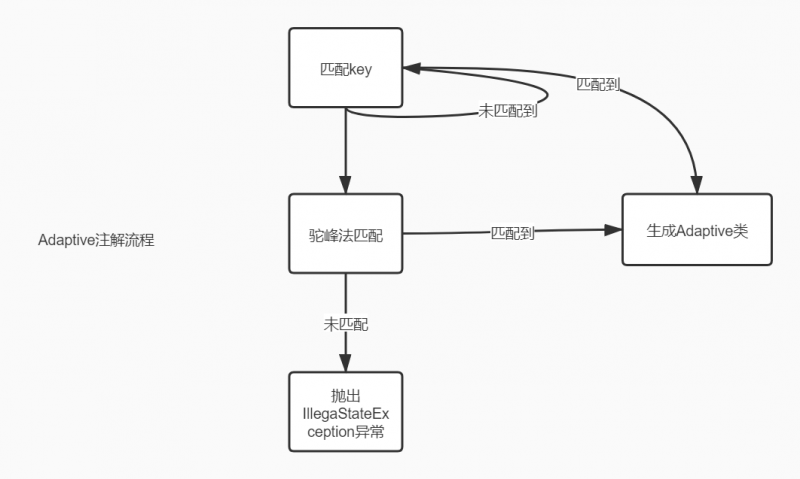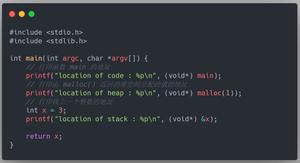Android6.0 消息机制原理解析
消息都是存放在一个消息队列中去,而消息循环线程就是围绕这个消息队列进入一个无限循环的,直到线程退出。如果队列中有消息,消息循环线程就会把它取出来,并分发给相应的Handler进行处理;如果队列中没有消息,消息循环线程就会进入空闲等待状态,等待下一个消息的到来。在编写Android应用程序时,当程序执行的任务比较繁重时,为了不阻塞UI主线程而导致ANR的发生,我们通常的做法的创建一个子线程来完成特定的任务。在创建子线程时,有两种选择,一种通过创建Thread对象来创建一个无消息循环的子线程;还有一种就是创建一个带有消息循环的子线程,而创建带有消息循环的子线程由于两种实现方法,一种是直接利用Android给我们封装好的HandlerThread类来直接生成一个带有消息循环的线程对象,另一种方法是在实现线程的run()方法内使用以下方式启动一个消息循环:
一、消息机制使用
通常消息都是有一个消息线程和一个Handler组成,下面我们看PowerManagerService中的一个消息Handler:
mHandlerThread = new ServiceThread(TAG,
Process.THREAD_PRIORITY_DISPLAY, false /*allowIo*/);
mHandlerThread.start();
mHandler = new PowerManagerHandler(mHandlerThread.getLooper());
这里的ServiceThread就是一个HandlerThread,创建Handler的时候,必须把HandlerThread的looper传进去,否则就是默认当前线程的looper。
而每个handler,大致如下:
private final class PowerManagerHandler extends Handler {
public PowerManagerHandler(Looper looper) {
super(looper, null, true /*async*/);
}
@Override
public void handleMessage(Message msg) {
switch (msg.what) {
case MSG_USER_ACTIVITY_TIMEOUT:
handleUserActivityTimeout();
break;
case MSG_SANDMAN:
handleSandman();
break;
case MSG_SCREEN_BRIGHTNESS_BOOST_TIMEOUT:
handleScreenBrightnessBoostTimeout();
break;
case MSG_CHECK_WAKE_LOCK_ACQUIRE_TIMEOUT:
checkWakeLockAquireTooLong();
Message m = mHandler.obtainMessage(MSG_CHECK_WAKE_LOCK_ACQUIRE_TIMEOUT);
m.setAsynchronous(true);
mHandler.sendMessageDelayed(m, WAKE_LOCK_ACQUIRE_TOO_LONG_TIMEOUT);
break;
}
}
}
二、消息机制原理
那我们先来看下HandlerThread的主函数run函数:
public void run() {
mTid = Process.myTid();
Looper.prepare();
synchronized (this) {
mLooper = Looper.myLooper();//赋值后notifyall,主要是getLooper函数返回的是mLooper
notifyAll();
}
Process.setThreadPriority(mPriority);
onLooperPrepared();
Looper.loop();
mTid = -1;
}
再来看看Lopper的prepare函数,最后新建了一个Looper对象,并且放在线程的局部变量中。
public static void prepare() {
prepare(true);
}
private static void prepare(boolean quitAllowed) {
if (sThreadLocal.get() != null) {
throw new RuntimeException("Only one Looper may be created per thread");
}
sThreadLocal.set(new Looper(quitAllowed));
}
Looper的构造函数中创建了MessageQueue
private Looper(boolean quitAllowed) {
mQueue = new MessageQueue(quitAllowed);
mThread = Thread.currentThread();
}
我们再来看下MessageQueue的构造函数,其中nativeInit是一个native方法,并且把返回值保存在mPtr显然是用long型变量保存的指针
MessageQueue(boolean quitAllowed) {
mQuitAllowed = quitAllowed;
mPtr = nativeInit();
}
native函数中主要创建了NativeMessageQueue对象,并且把指针变量返回了。
static jlong android_os_MessageQueue_nativeInit(JNIEnv* env, jclass clazz) {
NativeMessageQueue* nativeMessageQueue = new NativeMessageQueue();
if (!nativeMessageQueue) {
jniThrowRuntimeException(env, "Unable to allocate native queue");
return 0;
}
nativeMessageQueue->incStrong(env);
return reinterpret_cast<jlong>(nativeMessageQueue);
}
NativeMessageQueue构造函数就是获取mLooper,如果没有就是新建一个Looper
NativeMessageQueue::NativeMessageQueue() :
mPollEnv(NULL), mPollObj(NULL), mExceptionObj(NULL) {
mLooper = Looper::getForThread();
if (mLooper == NULL) {
mLooper = new Looper(false);
Looper::setForThread(mLooper);
}
}
然后我们再看下Looper的构造函数,显示调用了eventfd创建了一个fd,eventfd它的主要是用于进程或者线程间的通信,我们可以看下这篇博客eventfd介绍
Looper::Looper(bool allowNonCallbacks) :
mAllowNonCallbacks(allowNonCallbacks), mSendingMessage(false),
mPolling(false), mEpollFd(-1), mEpollRebuildRequired(false),
mNextRequestSeq(0), mResponseIndex(0), mNextMessageUptime(LLONG_MAX) {
mWakeEventFd = eventfd(0, EFD_NONBLOCK);
LOG_ALWAYS_FATAL_IF(mWakeEventFd < 0, "Could not make wake event fd. errno=%d", errno);
AutoMutex _l(mLock);
rebuildEpollLocked();
}
2.1 c层创建epoll
我们再来看下rebuildEpollLocked函数,创建了epoll,并且把mWakeEventFd加入epoll,而且把mRequests的fd也加入epoll
void Looper::rebuildEpollLocked() {
// Close old epoll instance if we have one.
if (mEpollFd >= 0) {
#if DEBUG_CALLBACKS
ALOGD("%p ~ rebuildEpollLocked - rebuilding epoll set", this);
#endif
close(mEpollFd);
}
// Allocate the new epoll instance and register the wake pipe.
mEpollFd = epoll_create(EPOLL_SIZE_HINT);
LOG_ALWAYS_FATAL_IF(mEpollFd < 0, "Could not create epoll instance. errno=%d", errno);
struct epoll_event eventItem;
memset(& eventItem, 0, sizeof(epoll_event)); // zero out unused members of data field union
eventItem.events = EPOLLIN;
eventItem.data.fd = mWakeEventFd;
int result = epoll_ctl(mEpollFd, EPOLL_CTL_ADD, mWakeEventFd, & eventItem);
LOG_ALWAYS_FATAL_IF(result != 0, "Could not add wake event fd to epoll instance. errno=%d",
errno);
for (size_t i = 0; i < mRequests.size(); i++) {
const Request& request = mRequests.valueAt(i);
struct epoll_event eventItem;
request.initEventItem(&eventItem);
int epollResult = epoll_ctl(mEpollFd, EPOLL_CTL_ADD, request.fd, & eventItem);
if (epollResult < 0) {
ALOGE("Error adding epoll events for fd %d while rebuilding epoll set, errno=%d",
request.fd, errno);
}
}
}
继续回到HandlerThread的run函数,我们继续分析Looper的loop函数
public void run() {
mTid = Process.myTid();
Looper.prepare();
synchronized (this) {
mLooper = Looper.myLooper();
notifyAll();
}
Process.setThreadPriority(mPriority);
onLooperPrepared();
Looper.loop();
mTid = -1;
}
我们看看Looper的loop函数:
public static void loop() {
final Looper me = myLooper();
if (me == null) {
throw new RuntimeException("No Looper; Looper.prepare() wasn't called on this thread.");
}
final MessageQueue queue = me.mQueue;//得到Looper的mQueue
// Make sure the identity of this thread is that of the local process,
// and keep track of what that identity token actually is.
Binder.clearCallingIdentity();
final long ident = Binder.clearCallingIdentity();
for (;;) {
Message msg = queue.next(); // might block这个函数会阻塞,阻塞主要是epoll_wait
if (msg == null) {
// No message indicates that the message queue is quitting.
return;
}
// This must be in a local variable, in case a UI event sets the logger
Printer logging = me.mLogging;//自己打的打印
if (logging != null) {
logging.println(">>>>> Dispatching to " + msg.target + " " +
msg.callback + ": " + msg.what);
}
msg.target.dispatchMessage(msg);
if (logging != null) {
logging.println("<<<<< Finished to " + msg.target + " " + msg.callback);
}
// Make sure that during the course of dispatching the
// identity of the thread wasn't corrupted.
final long newIdent = Binder.clearCallingIdentity();
if (ident != newIdent) {
Log.wtf(TAG, "Thread identity changed from 0x"
+ Long.toHexString(ident) + " to 0x"
+ Long.toHexString(newIdent) + " while dispatching to "
+ msg.target.getClass().getName() + " "
+ msg.callback + " what=" + msg.what);
}
msg.recycleUnchecked();
}
}
MessageQueue类的next函数主要是调用了nativePollOnce函数,后面就是从消息队列中取出一个Message
Message next() {
// Return here if the message loop has already quit and been disposed.
// This can happen if the application tries to restart a looper after quit
// which is not supported.
final long ptr = mPtr;//之前保留的指针
if (ptr == 0) {
return null;
}
int pendingIdleHandlerCount = -1; // -1 only during first iteration
int nextPollTimeoutMillis = 0;
for (;;) {
if (nextPollTimeoutMillis != 0) {
Binder.flushPendingCommands();
}
nativePollOnce(ptr, nextPollTimeoutMillis);
下面我们主要看下nativePollOnce这个native函数,把之前的指针强制转换成NativeMessageQueue,然后调用其pollOnce函数
static void android_os_MessageQueue_nativePollOnce(JNIEnv* env, jobject obj,
jlong ptr, jint timeoutMillis) {
NativeMessageQueue* nativeMessageQueue = reinterpret_cast<NativeMessageQueue*>(ptr);
nativeMessageQueue->pollOnce(env, obj, timeoutMillis);
}
2.2 c层epoll_wait阻塞
pollOnce函数,这个函数前面的while一般都没有只是处理了indent大于0的情况,这种情况一般没有,所以我们可以直接看pollInner函数
int Looper::pollOnce(int timeoutMillis, int* outFd, int* outEvents, void** outData) {
int result = 0;
for (;;) {
while (mResponseIndex < mResponses.size()) {
const Response& response = mResponses.itemAt(mResponseIndex++);
int ident = response.request.ident;
if (ident >= 0) {
int fd = response.request.fd;
int events = response.events;
void* data = response.request.data;
#if DEBUG_POLL_AND_WAKE
ALOGD("%p ~ pollOnce - returning signalled identifier %d: "
"fd=%d, events=0x%x, data=%p",
this, ident, fd, events, data);
#endif
if (outFd != NULL) *outFd = fd;
if (outEvents != NULL) *outEvents = events;
if (outData != NULL) *outData = data;
return ident;
}
}
if (result != 0) {
#if DEBUG_POLL_AND_WAKE
ALOGD("%p ~ pollOnce - returning result %d", this, result);
#endif
if (outFd != NULL) *outFd = 0;
if (outEvents != NULL) *outEvents = 0;
if (outData != NULL) *outData = NULL;
return result;
}
result = pollInner(timeoutMillis);
}
}
pollInner函数主要就是调用epoll_wait阻塞,并且java层会计算每次阻塞的时间传到c层,等待有mWakeEventFd或者之前addFd的fd有事件过来,才会epoll_wait返回。
int Looper::pollInner(int timeoutMillis) {
#if DEBUG_POLL_AND_WAKE
ALOGD("%p ~ pollOnce - waiting: timeoutMillis=%d", this, timeoutMillis);
#endif
// Adjust the timeout based on when the next message is due.
if (timeoutMillis != 0 && mNextMessageUptime != LLONG_MAX) {
nsecs_t now = systemTime(SYSTEM_TIME_MONOTONIC);
int messageTimeoutMillis = toMillisecondTimeoutDelay(now, mNextMessageUptime);
if (messageTimeoutMillis >= 0
&& (timeoutMillis < 0 || messageTimeoutMillis < timeoutMillis)) {
timeoutMillis = messageTimeoutMillis;
}
#if DEBUG_POLL_AND_WAKE
ALOGD("%p ~ pollOnce - next message in %" PRId64 "ns, adjusted timeout: timeoutMillis=%d",
this, mNextMessageUptime - now, timeoutMillis);
#endif
}
// Poll.
int result = POLL_WAKE;
mResponses.clear();//清空mResponses
mResponseIndex = 0;
// We are about to idle.
mPolling = true;
struct epoll_event eventItems[EPOLL_MAX_EVENTS];
int eventCount = epoll_wait(mEpollFd, eventItems, EPOLL_MAX_EVENTS, timeoutMillis);//epoll_wait主要线程阻塞在这,这个阻塞的时间也是有java层传过来的
// No longer idling.
mPolling = false;
// Acquire lock.
mLock.lock();
// Rebuild epoll set if needed.
if (mEpollRebuildRequired) {
mEpollRebuildRequired = false;
rebuildEpollLocked();
goto Done;
}
// Check for poll error.
if (eventCount < 0) {
if (errno == EINTR) {
goto Done;
}
ALOGW("Poll failed with an unexpected error, errno=%d", errno);
result = POLL_ERROR;
goto Done;
}
// Check for poll timeout.
if (eventCount == 0) {
#if DEBUG_POLL_AND_WAKE
ALOGD("%p ~ pollOnce - timeout", this);
#endif
result = POLL_TIMEOUT;
goto Done;
}
// Handle all events.
#if DEBUG_POLL_AND_WAKE
ALOGD("%p ~ pollOnce - handling events from %d fds", this, eventCount);
#endif
for (int i = 0; i < eventCount; i++) {
int fd = eventItems[i].data.fd;
uint32_t epollEvents = eventItems[i].events;
if (fd == mWakeEventFd) {//通知唤醒线程的事件
if (epollEvents & EPOLLIN) {
awoken();
} else {
ALOGW("Ignoring unexpected epoll events 0x%x on wake event fd.", epollEvents);
}
} else {
ssize_t requestIndex = mRequests.indexOfKey(fd);//之前addFd的事件
if (requestIndex >= 0) {
int events = 0;
if (epollEvents & EPOLLIN) events |= EVENT_INPUT;
if (epollEvents & EPOLLOUT) events |= EVENT_OUTPUT;
if (epollEvents & EPOLLERR) events |= EVENT_ERROR;
if (epollEvents & EPOLLHUP) events |= EVENT_HANGUP;
pushResponse(events, mRequests.valueAt(requestIndex));//放在mResponses中
} else {
ALOGW("Ignoring unexpected epoll events 0x%x on fd %d that is "
"no longer registered.", epollEvents, fd);
}
}
}
Done: ;
// Invoke pending message callbacks.
mNextMessageUptime = LLONG_MAX;
while (mMessageEnvelopes.size() != 0) {// 这块主要是c层的消息,java层的消息是自己管理的
nsecs_t now = systemTime(SYSTEM_TIME_MONOTONIC);
const MessageEnvelope& messageEnvelope = mMessageEnvelopes.itemAt(0);
if (messageEnvelope.uptime <= now) {
// Remove the envelope from the list.
// We keep a span reference to the handler until the call to handleMessage
// finishes. Then we drop it so that the handler can be deleted *before*
// we reacquire our lock.
{ // obtain handler
sp<MessageHandler> handler = messageEnvelope.handler;
Message message = messageEnvelope.message;
mMessageEnvelopes.removeAt(0);
mSendingMessage = true;
mLock.unlock();
#if DEBUG_POLL_AND_WAKE || DEBUG_CALLBACKS
ALOGD("%p ~ pollOnce - sending message: handler=%p, what=%d",
this, handler.get(), message.what);
#endif
handler->handleMessage(message);
} // release handler
mLock.lock();
mSendingMessage = false;
result = POLL_CALLBACK;
} else {
// The last message left at the head of the queue determines the next wakeup time.
mNextMessageUptime = messageEnvelope.uptime;
break;
}
}
// Release lock.
mLock.unlock();
// Invoke all response callbacks.
for (size_t i = 0; i < mResponses.size(); i++) {//这是之前addFd的事件的处理,主要是遍历mResponses,然后调用其回调
Response& response = mResponses.editItemAt(i);
if (response.request.ident == POLL_CALLBACK) {
int fd = response.request.fd;
int events = response.events;
void* data = response.request.data;
#if DEBUG_POLL_AND_WAKE || DEBUG_CALLBACKS
ALOGD("%p ~ pollOnce - invoking fd event callback %p: fd=%d, events=0x%x, data=%p",
this, response.request.callback.get(), fd, events, data);
#endif
// Invoke the callback. Note that the file descriptor may be closed by
// the callback (and potentially even reused) before the function returns so
// we need to be a little careful when removing the file descriptor afterwards.
int callbackResult = response.request.callback->handleEvent(fd, events, data);
if (callbackResult == 0) {
removeFd(fd, response.request.seq);
}
// Clear the callback reference in the response structure promptly because we
// will not clear the response vector itself until the next poll.
response.request.callback.clear();
result = POLL_CALLBACK;
}
}
return result;
}
继续分析Looper的loop函数,可以增加自己的打印来调试代码,之前调用Message的target的dispatchMessage来分配消息
for (;;) {
Message msg = queue.next(); // might block
if (msg == null) {
// No message indicates that the message queue is quitting.
return;
}
// This must be in a local variable, in case a UI event sets the logger
Printer logging = me.mLogging;//自己的打印
if (logging != null) {
logging.println(">>>>> Dispatching to " + msg.target + " " +
msg.callback + ": " + msg.what);
}
msg.target.dispatchMessage(msg);
if (logging != null) {
logging.println("<<<<< Finished to " + msg.target + " " + msg.callback);
}
// Make sure that during the course of dispatching the
// identity of the thread wasn't corrupted.
final long newIdent = Binder.clearCallingIdentity();
if (ident != newIdent) {
Log.wtf(TAG, "Thread identity changed from 0x"
+ Long.toHexString(ident) + " to 0x"
+ Long.toHexString(newIdent) + " while dispatching to "
+ msg.target.getClass().getName() + " "
+ msg.callback + " what=" + msg.what);
}
msg.recycleUnchecked();
}
}
2.3 增加调试打印
我们先来看自己添加打印,可以通过Lopper的setMessageLogging函数来打印
public void setMessageLogging(@Nullable Printer printer) {
mLogging = printer;
}
Printer就是一个interface
public interface Printer {
/**
* Write a line of text to the output. There is no need to terminate
* the given string with a newline.
*/
void println(String x);
}
2.4 java层消息分发处理
再来看消息的分发,先是调用Handler的obtainMessage函数
Message msg = mHandler.obtainMessage(MSG_CHECK_WAKE_LOCK_ACQUIRE_TIMEOUT);
msg.setAsynchronous(true);
mHandler.sendMessageDelayed(msg, WAKE_LOCK_ACQUIRE_TOO_LONG_TIMEOUT);
先看obtainMessage调用了Message的obtain函数
public final Message obtainMessage(int what)
{
return Message.obtain(this, what);
}
Message的obtain函数就是新建一个Message,然后其target就是设置成其Handler
public static Message obtain(Handler h, int what) {
Message m = obtain();//就是新建一个Message
m.target = h;
m.what = what;
return m;
}
我们再联系之前分发消息
msg.target.dispatchMessage(msg);最后就是调用Handler的dispatchMessage函数,最后在Handler中,最后会根据不同的情况对消息进行处理。
public void dispatchMessage(Message msg) {
if (msg.callback != null) {
handleCallback(msg);//这种就是用post形式发送,带Runnable的
} else {
if (mCallback != null) {//这种是handler传参的时候就是传入了mCallback回调了
if (mCallback.handleMessage(msg)) {
return;
}
}
handleMessage(msg);//最后就是在自己实现的handleMessage处理
}
}
2.3 java层 消息发送
我们再看下java层的消息发送,主要也是调用Handler的sendMessage post之类函数,最终都会调用下面这个函数
public boolean sendMessageAtTime(Message msg, long uptimeMillis) {
MessageQueue queue = mQueue;
if (queue == null) {
RuntimeException e = new RuntimeException(
this + " sendMessageAtTime() called with no mQueue");
Log.w("Looper", e.getMessage(), e);
return false;
}
return enqueueMessage(queue, msg, uptimeMillis);
}
我们再来看java层发送消息最终都会调用enqueueMessage函数
private boolean enqueueMessage(MessageQueue queue, Message msg, long uptimeMillis) {
msg.target = this;
if (mAsynchronous) {
msg.setAsynchronous(true);
}
return queue.enqueueMessage(msg, uptimeMillis);
}
最终在enqueueMessage中,把消息加入消息队列,然后需要的话就调用c层的nativeWake函数
boolean enqueueMessage(Message msg, long when) {
if (msg.target == null) {
throw new IllegalArgumentException("Message must have a target.");
}
if (msg.isInUse()) {
throw new IllegalStateException(msg + " This message is already in use.");
}
synchronized (this) {
if (mQuitting) {
IllegalStateException e = new IllegalStateException(
msg.target + " sending message to a Handler on a dead thread");
Log.w(TAG, e.getMessage(), e);
msg.recycle();
return false;
}
msg.markInUse();
msg.when = when;
Message p = mMessages;
boolean needWake;
if (p == null || when == 0 || when < p.when) {
// New head, wake up the event queue if blocked.
msg.next = p;
mMessages = msg;
needWake = mBlocked;
} else {
// Inserted within the middle of the queue. Usually we don't have to wake
// up the event queue unless there is a barrier at the head of the queue
// and the message is the earliest asynchronous message in the queue.
needWake = mBlocked && p.target == null && msg.isAsynchronous();
Message prev;
for (;;) {
prev = p;
p = p.next;
if (p == null || when < p.when) {
break;
}
if (needWake && p.isAsynchronous()) {
needWake = false;
}
}
msg.next = p; // invariant: p == prev.next
prev.next = msg;
}
// We can assume mPtr != 0 because mQuitting is false.
if (needWake) {
nativeWake(mPtr);
}
}
return true;
}
我们看下这个native方法,最后也是调用了Looper的wake函数
static void android_os_MessageQueue_nativeWake(JNIEnv* env, jclass clazz, jlong ptr) {
NativeMessageQueue* nativeMessageQueue = reinterpret_cast<NativeMessageQueue*>(ptr);
nativeMessageQueue->wake();
}
void NativeMessageQueue::wake() {
mLooper->wake();
}
Looper类的wake,函数只是往mWakeEventfd中写了一些内容,这个fd只是通知而已,类似pipe,最后会把epoll_wait唤醒,线程就不阻塞了继续先发送c层消息,然后处理之前addFd的事件,然后处理java层的消息。
void Looper::wake() {
#if DEBUG_POLL_AND_WAKE
ALOGD("%p ~ wake", this);
#endif
uint64_t inc = 1;
ssize_t nWrite = TEMP_FAILURE_RETRY(write(mWakeEventFd, &inc, sizeof(uint64_t)));
if (nWrite != sizeof(uint64_t)) {
if (errno != EAGAIN) {
ALOGW("Could not write wake signal, errno=%d", errno);
}
}
}
2.4 c层发送消息
在c层也是可以发送消息的,主要是调用Looper的sendMessageAtTime函数,参数有有一个handler是一个回调,我们把消息放在mMessageEnvelopes中。
void Looper::sendMessageAtTime(nsecs_t uptime, const sp<MessageHandler>& handler,
const Message& message) {
#if DEBUG_CALLBACKS
ALOGD("%p ~ sendMessageAtTime - uptime=%" PRId64 ", handler=%p, what=%d",
this, uptime, handler.get(), message.what);
#endif
size_t i = 0;
{ // acquire lock
AutoMutex _l(mLock);
size_t messageCount = mMessageEnvelopes.size();
while (i < messageCount && uptime >= mMessageEnvelopes.itemAt(i).uptime) {
i += 1;
}
MessageEnvelope messageEnvelope(uptime, handler, message);
mMessageEnvelopes.insertAt(messageEnvelope, i, 1);
// Optimization: If the Looper is currently sending a message, then we can skip
// the call to wake() because the next thing the Looper will do after processing
// messages is to decide when the next wakeup time should be. In fact, it does
// not even matter whether this code is running on the Looper thread.
if (mSendingMessage) {
return;
}
} // release lock
// Wake the poll loop only when we enqueue a new message at the head.
if (i == 0) {
wake();
}
}
当在pollOnce中,在epoll_wait之后,会遍历mMessageEnvelopes中的消息,然后调用其handler的handleMessage函数
while (mMessageEnvelopes.size() != 0) {
nsecs_t now = systemTime(SYSTEM_TIME_MONOTONIC);
const MessageEnvelope& messageEnvelope = mMessageEnvelopes.itemAt(0);
if (messageEnvelope.uptime <= now) {
// Remove the envelope from the list.
// We keep a span reference to the handler until the call to handleMessage
// finishes. Then we drop it so that the handler can be deleted *before*
// we reacquire our lock.
{ // obtain handler
sp<MessageHandler> handler = messageEnvelope.handler;
Message message = messageEnvelope.message;
mMessageEnvelopes.removeAt(0);
mSendingMessage = true;
mLock.unlock();
#if DEBUG_POLL_AND_WAKE || DEBUG_CALLBACKS
ALOGD("%p ~ pollOnce - sending message: handler=%p, what=%d",
this, handler.get(), message.what);
#endif
handler->handleMessage(message);
} // release handler
mLock.lock();
mSendingMessage = false;
result = POLL_CALLBACK;
} else {
// The last message left at the head of the queue determines the next wakeup time.
mNextMessageUptime = messageEnvelope.uptime;
break;
}
}
有一个Looper_test.cpp文件,里面介绍了很多Looper的使用方法,我们来看下
sp<StubMessageHandler> handler = new StubMessageHandler();
mLooper->sendMessageAtTime(now + ms2ns(100), handler, Message(MSG_TEST1));
StubMessageHandler继承MessageHandler就必须实现handleMessage方法
class StubMessageHandler : public MessageHandler {
public:
Vector<Message> messages;
virtual void handleMessage(const Message& message) {
messages.push(message);
}
};
我们再顺便看下Message和MessageHandler类
struct Message {
Message() : what(0) { }
Message(int what) : what(what) { }
/* The message type. (interpretation is left up to the handler) */
int what;
};
/**
* Interface for a Looper message handler.
*
* The Looper holds a span reference to the message handler whenever it has
* a message to deliver to it. Make sure to call Looper::removeMessages
* to remove any pending messages destined for the handler so that the handler
* can be destroyed.
*/
class MessageHandler : public virtual RefBase {
protected:
virtual ~MessageHandler() { }
public:
/**
* Handles a message.
*/
virtual void handleMessage(const Message& message) = 0;
};
2.5 c层addFd
我们也可以在Looper.cpp的addFd中增加fd放入线程epoll中,当fd有数据来我们也可以处理相应的数据,下面我们先来看下addFd函数,我们注意其中有一个callBack回调
int Looper::addFd(int fd, int ident, int events, Looper_callbackFunc callback, void* data) {
return addFd(fd, ident, events, callback ? new SimpleLooperCallback(callback) : NULL, data);
}
int Looper::addFd(int fd, int ident, int events, const sp<LooperCallback>& callback, void* data) {
#if DEBUG_CALLBACKS
ALOGD("%p ~ addFd - fd=%d, ident=%d, events=0x%x, callback=%p, data=%p", this, fd, ident,
events, callback.get(), data);
#endif
if (!callback.get()) {
if (! mAllowNonCallbacks) {
ALOGE("Invalid attempt to set NULL callback but not allowed for this looper.");
return -1;
}
if (ident < 0) {
ALOGE("Invalid attempt to set NULL callback with ident < 0.");
return -1;
}
} else {
ident = POLL_CALLBACK;
}
{ // acquire lock
AutoMutex _l(mLock);
Request request;
request.fd = fd;
request.ident = ident;
request.events = events;
request.seq = mNextRequestSeq++;
request.callback = callback;
request.data = data;
if (mNextRequestSeq == -1) mNextRequestSeq = 0; // reserve sequence number -1
struct epoll_event eventItem;
request.initEventItem(&eventItem);
ssize_t requestIndex = mRequests.indexOfKey(fd);
if (requestIndex < 0) {
int epollResult = epoll_ctl(mEpollFd, EPOLL_CTL_ADD, fd, & eventItem);//加入epoll
if (epollResult < 0) {
ALOGE("Error adding epoll events for fd %d, errno=%d", fd, errno);
return -1;
}
mRequests.add(fd, request);//放入mRequests中
} else {
int epollResult = epoll_ctl(mEpollFd, EPOLL_CTL_MOD, fd, & eventItem);//更新
if (epollResult < 0) {
if (errno == ENOENT) {
// Tolerate ENOENT because it means that an older file descriptor was
// closed before its callback was unregistered and meanwhile a new
// file descriptor with the same number has been created and is now
// being registered for the first time. This error may occur naturally
// when a callback has the side-effect of closing the file descriptor
// before returning and unregistering itself. Callback sequence number
// checks further ensure that the race is benign.
//
// Unfortunately due to kernel limitations we need to rebuild the epoll
// set from scratch because it may contain an old file handle that we are
// now unable to remove since its file descriptor is no longer valid.
// No such problem would have occurred if we were using the poll system
// call instead, but that approach carries others disadvantages.
#if DEBUG_CALLBACKS
ALOGD("%p ~ addFd - EPOLL_CTL_MOD failed due to file descriptor "
"being recycled, falling back on EPOLL_CTL_ADD, errno=%d",
this, errno);
#endif
epollResult = epoll_ctl(mEpollFd, EPOLL_CTL_ADD, fd, & eventItem);
if (epollResult < 0) {
ALOGE("Error modifying or adding epoll events for fd %d, errno=%d",
fd, errno);
return -1;
}
scheduleEpollRebuildLocked();
} else {
ALOGE("Error modifying epoll events for fd %d, errno=%d", fd, errno);
return -1;
}
}
mRequests.replaceValueAt(requestIndex, request);
}
} // release lock
return 1;
}
在pollOnce函数中,我们先寻找mRequests中匹配的fd,然后在pushResponse中新建一个Response,然后把Response和Request匹配起来。
} else {
ssize_t requestIndex = mRequests.indexOfKey(fd);
if (requestIndex >= 0) {
int events = 0;
if (epollEvents & EPOLLIN) events |= EVENT_INPUT;
if (epollEvents & EPOLLOUT) events |= EVENT_OUTPUT;
if (epollEvents & EPOLLERR) events |= EVENT_ERROR;
if (epollEvents & EPOLLHUP) events |= EVENT_HANGUP;
pushResponse(events, mRequests.valueAt(requestIndex));
} else {
ALOGW("Ignoring unexpected epoll events 0x%x on fd %d that is "
"no longer registered.", epollEvents, fd);
}
}
下面我们就会遍历mResponses中的Response,然后调用其request中的回调
for (size_t i = 0; i < mResponses.size(); i++) {
Response& response = mResponses.editItemAt(i);
if (response.request.ident == POLL_CALLBACK) {
int fd = response.request.fd;
int events = response.events;
void* data = response.request.data;
#if DEBUG_POLL_AND_WAKE || DEBUG_CALLBACKS
ALOGD("%p ~ pollOnce - invoking fd event callback %p: fd=%d, events=0x%x, data=%p",
this, response.request.callback.get(), fd, events, data);
#endif
// Invoke the callback. Note that the file descriptor may be closed by
// the callback (and potentially even reused) before the function returns so
// we need to be a little careful when removing the file descriptor afterwards.
int callbackResult = response.request.callback->handleEvent(fd, events, data);
if (callbackResult == 0) {
removeFd(fd, response.request.seq);
}
// Clear the callback reference in the response structure promptly because we
// will not clear the response vector itself until the next poll.
response.request.callback.clear();
result = POLL_CALLBACK;
}
}
同样我们再来看看Looper_test.cpp是如何使用的?
Pipe pipe;
StubCallbackHandler handler(true);
handler.setCallback(mLooper, pipe.receiveFd, Looper::EVENT_INPUT);
我们看下handler的setCallback函数
class CallbackHandler {
public:
void setCallback(const sp<Looper>& looper, int fd, int events) {
looper->addFd(fd, 0, events, staticHandler, this);//就是调用了looper的addFd函数,并且回调
}
protected:
virtual ~CallbackHandler() { }
virtual int handler(int fd, int events) = 0;
private:
static int staticHandler(int fd, int events, void* data) {//这个就是回调函数
return static_cast<CallbackHandler*>(data)->handler(fd, events);
}
};
class StubCallbackHandler : public CallbackHandler {
public:
int nextResult;
int callbackCount;
int fd;
int events;
StubCallbackHandler(int nextResult) : nextResult(nextResult),
callbackCount(0), fd(-1), events(-1) {
}
protected:
virtual int handler(int fd, int events) {//这个是通过回调函数再调到这里的
callbackCount += 1;
this->fd = fd;
this->events = events;
return nextResult;
}
};
我们结合Looper的addFd一起来看,当callback是有的,我们新建一个SimpleLooperCallback
int Looper::addFd(int fd, int ident, int events, Looper_callbackFunc callback, void* data) {
return addFd(fd, ident, events, callback ? new SimpleLooperCallback(callback) : NULL, data);
}
这里的Looper_callbackFunc是一个typedef
typedef int (*Looper_callbackFunc)(int fd, int events, void* data);
我们再来看SimpleLooperCallback
class SimpleLooperCallback : public LooperCallback {
protected:
virtual ~SimpleLooperCallback();
public:
SimpleLooperCallback(Looper_callbackFunc callback);
virtual int handleEvent(int fd, int events, void* data);
private:
Looper_callbackFunc mCallback;
};SimpleLooperCallback::SimpleLooperCallback(Looper_callbackFunc callback) :
mCallback(callback) {
}
SimpleLooperCallback::~SimpleLooperCallback() {
}
int SimpleLooperCallback::handleEvent(int fd, int events, void* data) {
return mCallback(fd, events, data);
}
最后我们是调用callback->handleEvent(fd, events, data),而callback就是SimpleLooperCallback,这里的data,之前传进来的就是CallbackHandler 的this指针
因此最后就是调用了staticHandler,而data->handler,就是this->handler,最后是虚函数就调用到了StubCallbackHandler 的handler函数中了。
当然我们也可以不用这么复杂,直接使用第二个addFd函数,当然callBack我们需要自己定义一个类来实现LooperCallBack类就行了,这样就简单多了。
int addFd(int fd, int ident, int events, const sp<LooperCallback>& callback, void* data);
2.6 java层addFd
一直以为只能在c层的Looper中才能addFd,原来在java层也通过jni做了这个功能。
我们可以在MessageQueue中的addOnFileDescriptorEventListener来实现这个功能
public void addOnFileDescriptorEventListener(@NonNull FileDescriptor fd,
@OnFileDescriptorEventListener.Events int events,
@NonNull OnFileDescriptorEventListener listener) {
if (fd == null) {
throw new IllegalArgumentException("fd must not be null");
}
if (listener == null) {
throw new IllegalArgumentException("listener must not be null");
}
synchronized (this) {
updateOnFileDescriptorEventListenerLocked(fd, events, listener);
}
}
我们再来看看OnFileDescriptorEventListener 这个回调
public interface OnFileDescriptorEventListener {
public static final int EVENT_INPUT = 1 << 0;
public static final int EVENT_OUTPUT = 1 << 1;
public static final int EVENT_ERROR = 1 << 2;
/** @hide */
@Retention(RetentionPolicy.SOURCE)
@IntDef(flag=true, value={EVENT_INPUT, EVENT_OUTPUT, EVENT_ERROR})
public @interface Events {}
@Events int onFileDescriptorEvents(@NonNull FileDescriptor fd, @Events int events);
}
接着调用了updateOnFileDescriptorEventListenerLocked函数
private void updateOnFileDescriptorEventListenerLocked(FileDescriptor fd, int events,
OnFileDescriptorEventListener listener) {
final int fdNum = fd.getInt$();
int index = -1;
FileDescriptorRecord record = null;
if (mFileDescriptorRecords != null) {
index = mFileDescriptorRecords.indexOfKey(fdNum);
if (index >= 0) {
record = mFileDescriptorRecords.valueAt(index);
if (record != null && record.mEvents == events) {
return;
}
}
}
if (events != 0) {
events |= OnFileDescriptorEventListener.EVENT_ERROR;
if (record == null) {
if (mFileDescriptorRecords == null) {
mFileDescriptorRecords = new SparseArray<FileDescriptorRecord>();
}
record = new FileDescriptorRecord(fd, events, listener);//fd保存在FileDescriptorRecord对象
mFileDescriptorRecords.put(fdNum, record);//mFileDescriptorRecords然后保存在
} else {
record.mListener = listener;
record.mEvents = events;
record.mSeq += 1;
}
nativeSetFileDescriptorEvents(mPtr, fdNum, events);//调用native函数
} else if (record != null) {
record.mEvents = 0;
mFileDescriptorRecords.removeAt(index);
}
}
native最后调用了NativeMessageQueue的setFileDescriptorEvents函数
static void android_os_MessageQueue_nativeSetFileDescriptorEvents(JNIEnv* env, jclass clazz,
jlong ptr, jint fd, jint events) {
NativeMessageQueue* nativeMessageQueue = reinterpret_cast<NativeMessageQueue*>(ptr);
nativeMessageQueue->setFileDescriptorEvents(fd, events);
}
setFileDescriptorEvents函数,这个addFd就是调用的第二个addFd,因此我们可以肯定NativeMessageQueue继承了LooperCallback
void NativeMessageQueue::setFileDescriptorEvents(int fd, int events) {
if (events) {
int looperEvents = 0;
if (events & CALLBACK_EVENT_INPUT) {
looperEvents |= Looper::EVENT_INPUT;
}
if (events & CALLBACK_EVENT_OUTPUT) {
looperEvents |= Looper::EVENT_OUTPUT;
}
mLooper->addFd(fd, Looper::POLL_CALLBACK, looperEvents, this,
reinterpret_cast<void*>(events));
} else {
mLooper->removeFd(fd);
}
}
果然是,需要实现handleEvent函数
class NativeMessageQueue : public MessageQueue, public LooperCallback {
public:
NativeMessageQueue();
virtual ~NativeMessageQueue();
virtual void raiseException(JNIEnv* env, const char* msg, jthrowable exceptionObj);
void pollOnce(JNIEnv* env, jobject obj, int timeoutMillis);
void wake();
void setFileDescriptorEvents(int fd, int events);
virtual int handleEvent(int fd, int events, void* data);
handleEvent就是在looper中epoll_wait之后,当我们增加的fd有数据就会调用这个函数
int NativeMessageQueue::handleEvent(int fd, int looperEvents, void* data) {
int events = 0;
if (looperEvents & Looper::EVENT_INPUT) {
events |= CALLBACK_EVENT_INPUT;
}
if (looperEvents & Looper::EVENT_OUTPUT) {
events |= CALLBACK_EVENT_OUTPUT;
}
if (looperEvents & (Looper::EVENT_ERROR | Looper::EVENT_HANGUP | Looper::EVENT_INVALID)) {
events |= CALLBACK_EVENT_ERROR;
}
int oldWatchedEvents = reinterpret_cast<intptr_t>(data);
int newWatchedEvents = mPollEnv->CallIntMethod(mPollObj,
gMessageQueueClassInfo.dispatchEvents, fd, events); //调用回调
if (!newWatchedEvents) {
return 0; // unregister the fd
}
if (newWatchedEvents != oldWatchedEvents) {
setFileDescriptorEvents(fd, newWatchedEvents);
}
return 1;
}
最后在java的MessageQueue中的dispatchEvents就是在jni层反调过来的,然后调用之前注册的回调函数
// Called from native code.
private int dispatchEvents(int fd, int events) {
// Get the file descriptor record and any state that might change.
final FileDescriptorRecord record;
final int oldWatchedEvents;
final OnFileDescriptorEventListener listener;
final int seq;
synchronized (this) {
record = mFileDescriptorRecords.get(fd);//通过fd得到FileDescriptorRecord
if (record == null) {
return 0; // spurious, no listener registered
}
oldWatchedEvents = record.mEvents;
events &= oldWatchedEvents; // filter events based on current watched set
if (events == 0) {
return oldWatchedEvents; // spurious, watched events changed
}
listener = record.mListener;
seq = record.mSeq;
}
// Invoke the listener outside of the lock.
int newWatchedEvents = listener.onFileDescriptorEvents(//listener回调
record.mDescriptor, events);
if (newWatchedEvents != 0) {
newWatchedEvents |= OnFileDescriptorEventListener.EVENT_ERROR;
}
// Update the file descriptor record if the listener changed the set of
// events to watch and the listener itself hasn't been updated since.
if (newWatchedEvents != oldWatchedEvents) {
synchronized (this) {
int index = mFileDescriptorRecords.indexOfKey(fd);
if (index >= 0 && mFileDescriptorRecords.valueAt(index) == record
&& record.mSeq == seq) {
record.mEvents = newWatchedEvents;
if (newWatchedEvents == 0) {
mFileDescriptorRecords.removeAt(index);
}
}
}
}
// Return the new set of events to watch for native code to take care of.
return newWatchedEvents;
}
以上是 Android6.0 消息机制原理解析 的全部内容, 来源链接: utcz.com/z/352260.html

